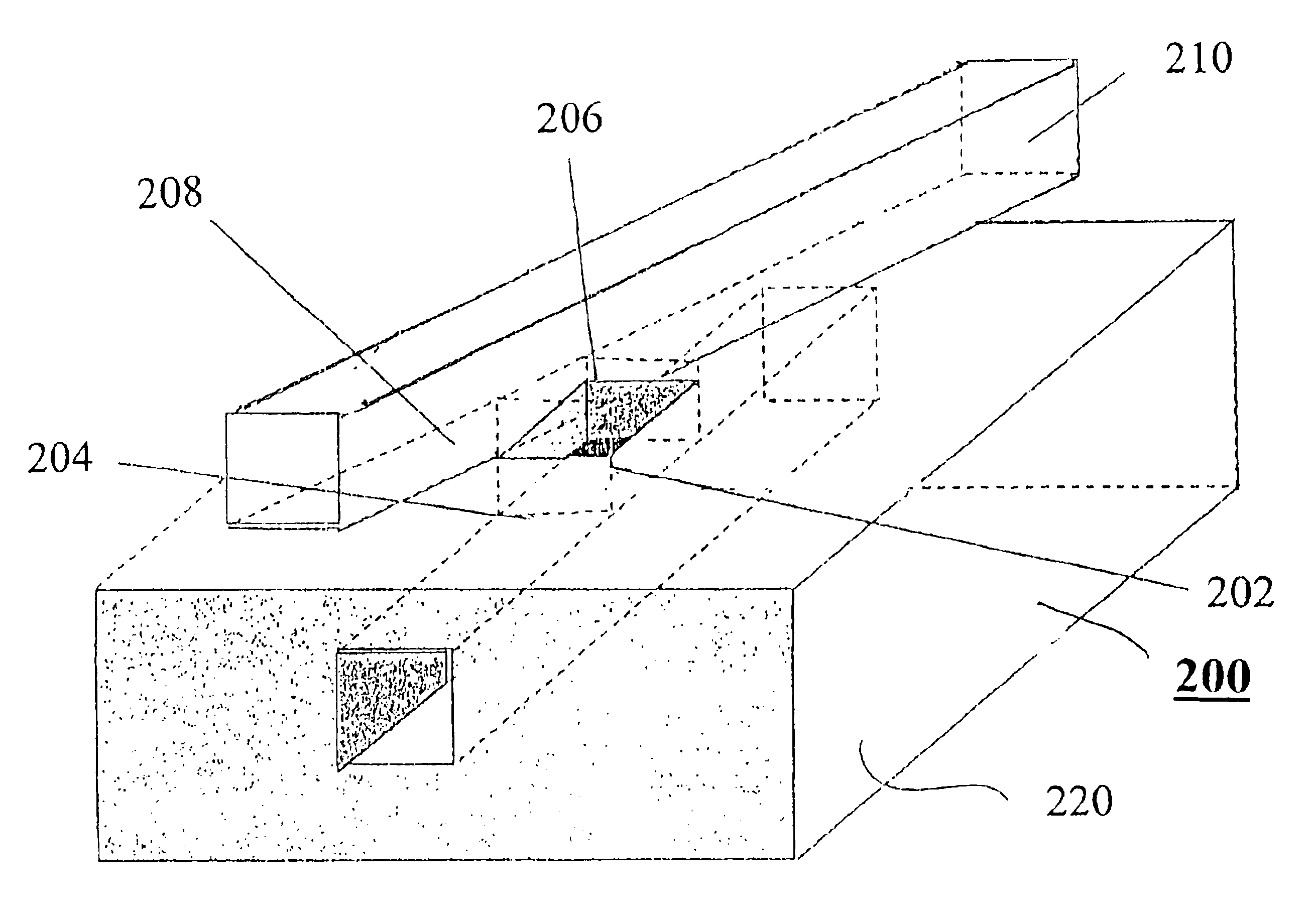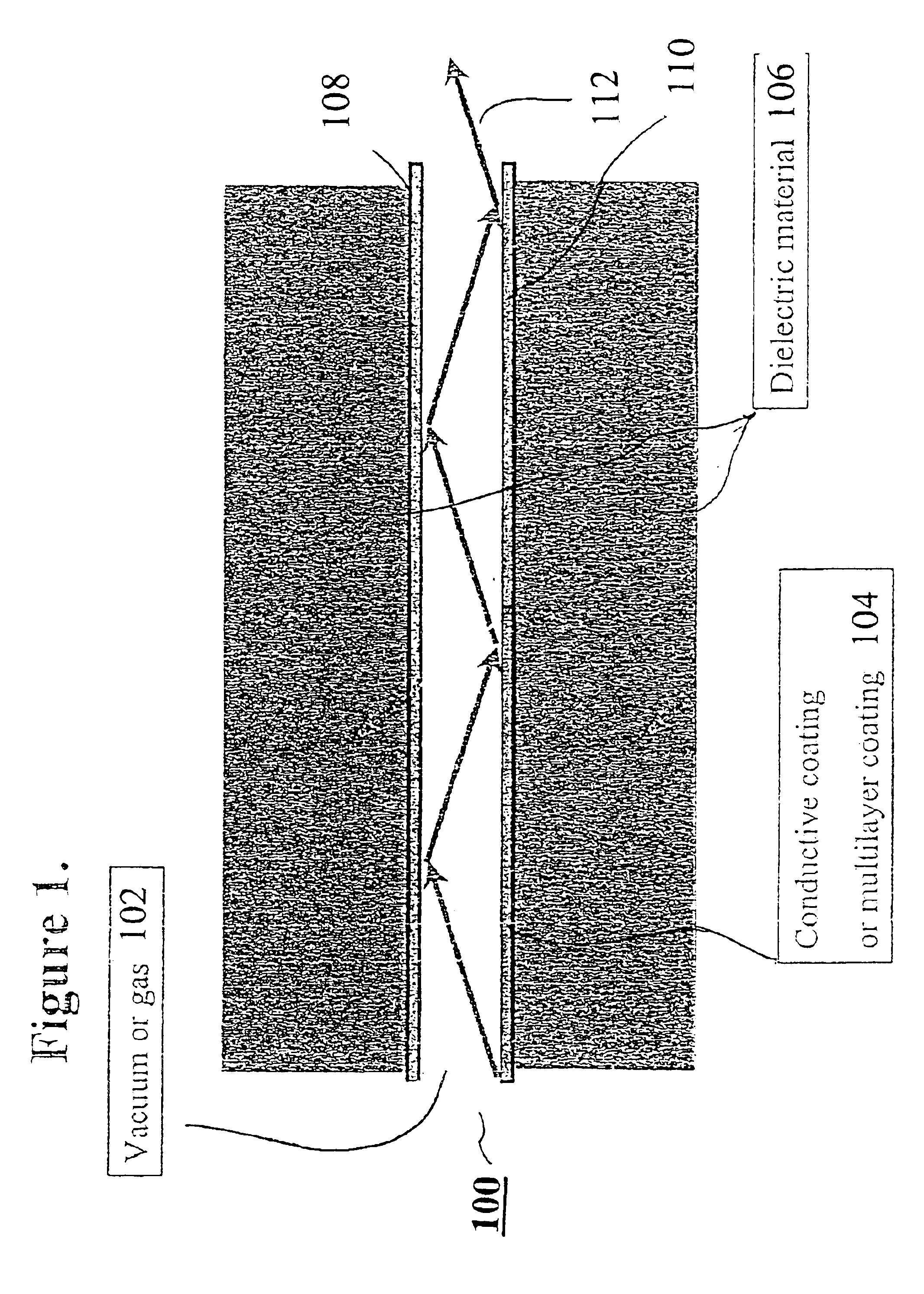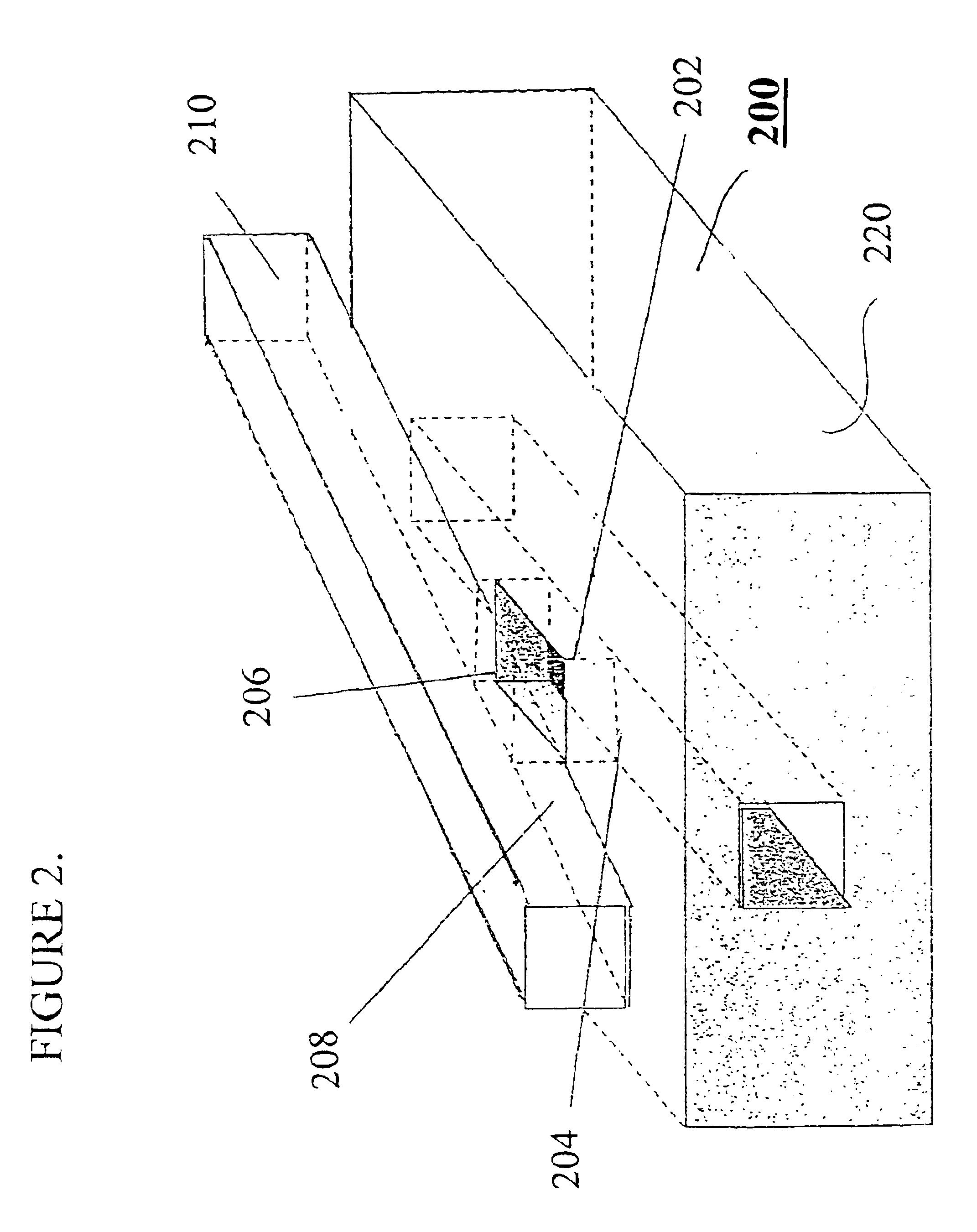Optical switching system based on hollow waveguides
a switching system and optical technology, applied in the field of optical switching system based on hollow waveguides, can solve the problems low insertion loss, and high insertion loss, and achieve the effect of low insertion loss
- Summary
- Abstract
- Description
- Claims
- Application Information
AI Technical Summary
Benefits of technology
Problems solved by technology
Method used
Image
Examples
Embodiment Construction
The present invention relates to integrated, chip-based, optical switching systems, specifically optical switching systems incorporating waveguides. More specifically, the present invention discloses an optical switching system based on hollow waveguides. The principles and operation of an optical switching system based on hollow waveguides according to the present invention may be better understood with reference to the drawings and the accompanying description. As mentioned above, various HW structures, as well as fabrication processes are known in the art. The invention described herein may be implemented using such known waveguides and fabrication processes.
FIG. 1 shows a longitudinal cross section of a HW 100 that includes a hollow (vacuum or gas filled) core 102 that can have a cross section of any shape (rectangular, round, hexagonal, etc.). The core is surrounded by a reflective coating 104 that may be single layered or multilayered, conductive or dielectric, and by an addit...
PUM
 Login to View More
Login to View More Abstract
Description
Claims
Application Information
 Login to View More
Login to View More - R&D
- Intellectual Property
- Life Sciences
- Materials
- Tech Scout
- Unparalleled Data Quality
- Higher Quality Content
- 60% Fewer Hallucinations
Browse by: Latest US Patents, China's latest patents, Technical Efficacy Thesaurus, Application Domain, Technology Topic, Popular Technical Reports.
© 2025 PatSnap. All rights reserved.Legal|Privacy policy|Modern Slavery Act Transparency Statement|Sitemap|About US| Contact US: help@patsnap.com



